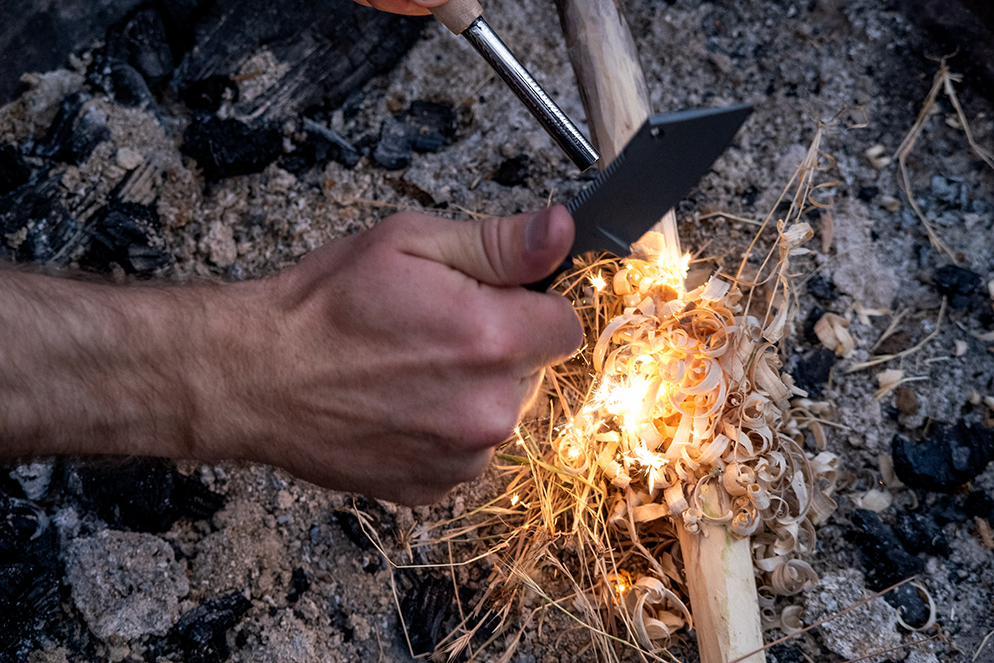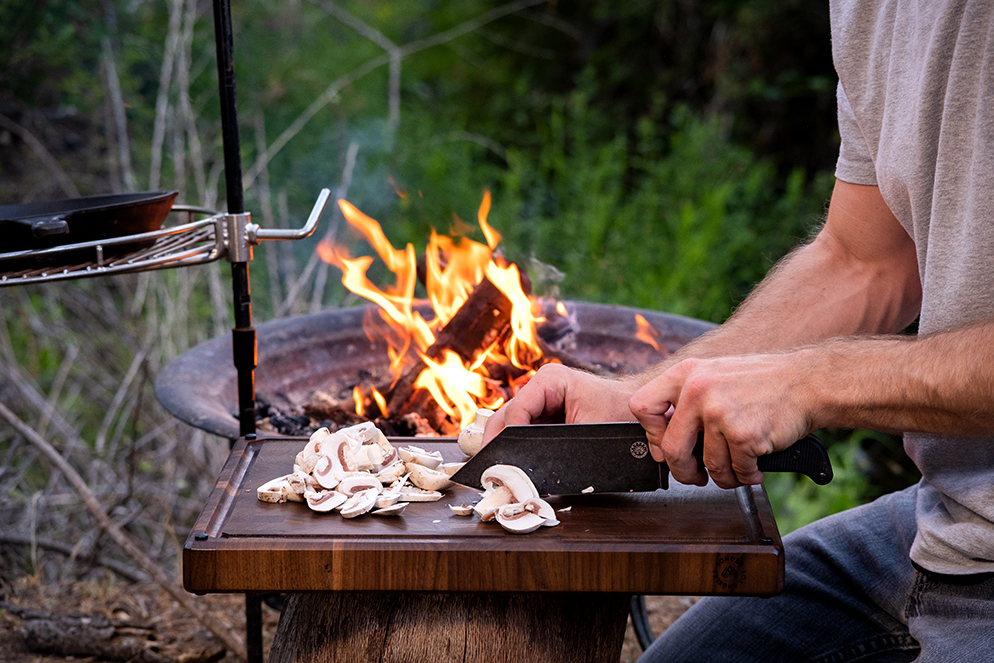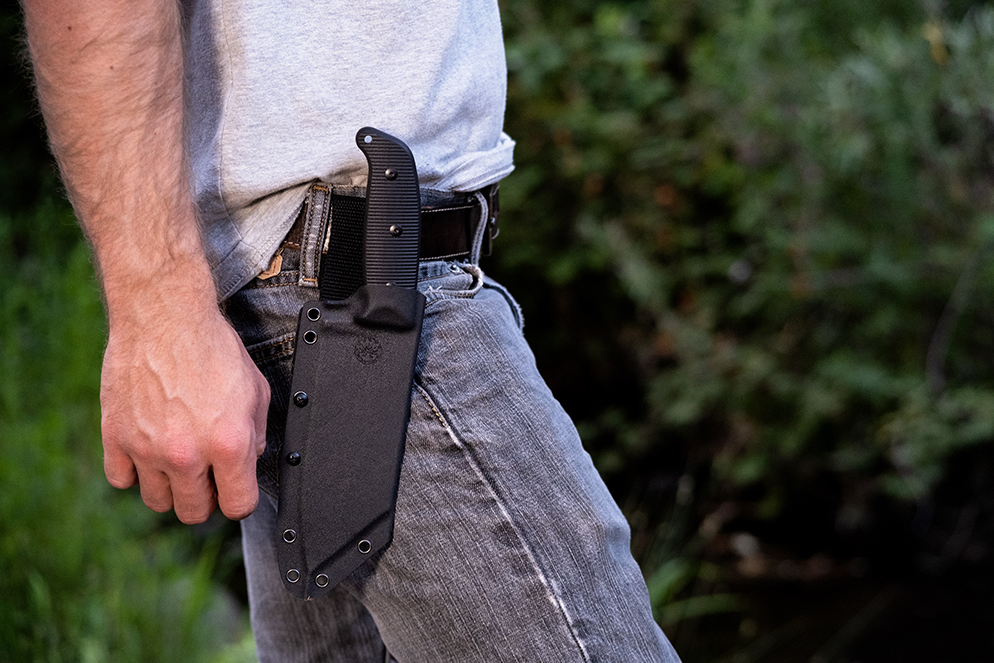Sharp Knives - Everything You Need To Know
Oct 19th 2022
Introduction
There are quite some instances when the sharp blade turned out to be dull. This is not acceptable and is risky.
So, what can you do as a buyer?
Simple actually. Get to know everything there is about knives - the best materials used to build truly sharp knives, ways to sharpen them, the different types of knives, and how to take care of your knife and yourself while using it.
This guide will make you understand everything you need to know about owning a sharp knife.
Let's begin.
The importance of a sharp knife
A knife with clean edges is one of the most versatile tools that you can carry with you. Whether you are using it for camping, hunting, or as a high-quality chef's knife, it is important to have a sharp knife.
A sharp knife is capable of biting straight into whatever you're cutting, which will hold the knife away from your fingers. A dull knife will bounce off, and cut you. Razor edges make it easier to do every task, but most particularly the fine ones.
Shaving wood to start a fire, skinning game, or quickly slicing a fishing line are all much easier with a razor-sharp pocket knife. In some cases, having that edge could save your life. Therefore, it is important to keep your knife sharpened and ready for use.
We will go through ways to sharpen your chef knife later in the blog.
First, let us learn about the best material used by knife makers to make a higher-quality knife.
The Best Material
When it comes to buying a brand-new knife, the quality of steel is everything. A curved blade made from inferior steel will dull quickly and be difficult to sharpen. On the other hand, a well-crafted durable blade made from high-quality steel will last for years with proper care.
Stainless steel blades made with M390 or CPM-T440V are some of the best on the market. They are made with high carbon content, which gives them their renowned durability.
However, this also makes them more challenging to sharpen than other stainless steel blades. But for those who want a blade that will last a lifetime, super steels are definitely worth the extra effort.
If you’re in the market for a new knife, you may have come across the term “AUS-8.” But what is AUS-8 steel, and why should you consider it for your next purchase? AUS-8 is high medium-quality steel that is comparable to 440B and C.
This type of steel takes a razor edge extremely well, making it a great option for a professional chef knife set and home cooks. Additionally, the slightly lower carbon content of AUS-8 steel makes it easier to sharpen at home.
So if you’re looking for an ultra-sharp kitchen knife that will perform beautifully and can be easily maintained, consider looking at the Grizzly Chef Knife, one of our top-selling products that use AUS-8 material.
How to sharpen a knife (Heavier knife/Lighter Knife)
If you're looking for an easy way to sharpen your knives, a knife sharpener with a drawer of features is a great option. They're simple to use and can be very effective, but it's important to keep in mind that they can be aggressive and remove a significant amount of blade material each time you use them.
For this reason, our personal preference is not this. it's generally best to only use a knife sharpener on a budget knife or an affordable knife. Otherwise, you risk damaging more expensive blades.

So, how can you take care of the expensive super sharp blades?
By using a whetstone to sharpen your knife. This is not exactly an easy way, but, if you want to provide the best care for your blade steel knives and make them last, you must use this method.
Steps to sharpen your favorite knife using whetstone:
- Put your stone in water for 5-10 minutes until the air bubbles stop leaking.
- If your whetstone does not have a non-slip base then keep a towel below your whetstone so that it does not slip off.
- Select an angle at which you will sharpen your knife. Generally, it is 20 degrees but it may vary. So, check the manual if it has recommended some different angles.
- Hold your blade at the required angle and slowly drag the sharp end of the blade towards yourself 3-6 times. Then change sides and repeat.
- Do this until you feel that your get excellent edge retention.
Knife care tips to keep your blades out of the land of mistakes
- Clean your knife after use
As anyone who has ever cut an onion knows, the strong smell of the vegetable can linger on your hands for hours afterward. Similarly, the acid in lemon juice can be tough on your skin. These same acids can also damage your knife blade over time, dulling the curved edge and making it more difficult to use.
As a result, it is important to clean your knife with soapy water after each use, especially if you have cut acidic foods. This will help to remove any lingering acids and prevent them from damaging the blade. In addition, it is a good idea to avoid using dish soap, as the harsh chemicals can also damage your knife.
- Quickly dry your Knife after the wash
Now that you've washed your knife, it's important to dry it off properly. If you let it sit wet, bacteria will start to grow and multiply. Over time, this can lead to a build-up of bacteria on your knife. Not only is this unsanitary, but it can also cause your knife to become dull and discolored thus downplaying its exceptional edge.
To avoid this, simply take a clean cloth and dry your knife immediately after washing it. This simple step will help to keep your knife clean and bacteria-free. In addition, it's important to regularly clean and disinfects your cutting board.
A dirty cutting board can easily transfer bacteria to your knife, so it's important to keep both surfaces clean. By following these simple tips, you can help to keep your kitchen safe and sanitary.
- Using wooden/plastic cutting boards
Cutting boards are an essential kitchen tool, but not all boards are created equal. Marble and glass boards may look sleek and stylish, but they can do more harm than good. hard surfaces can dull your knives more quickly, and glass can even break them.
In addition, these materials are much harder on your knives than softer woods or plastics. As a result, with tough tasks coming in, you'll have to sharpen your knives more often, and you're more likely to end up with nicks and chips in the curved edge blade.
So if you want to retain your knife's exceptional edge, stick to wooden or plastic cutting boards. They might not be as glamorous, but they'll make your life easier in the long run.
Your board may not be glamorous but your Hoglet knife can be. Click here to more about it.
- Store your knife correctly
If you're looking for a safe and effective way to store your knives, a knife rack is a great option. Knife racks come in a variety of sizes and styles, so you can find one that fits your kitchen's specific needs. Plus, keeping your knives on a rack ensures that they're always within reach when you need them.
Most importantly, though, knife racks help to keep your knives sharp and prevent accidental cuts. When choosing a knife rack, be sure to select one that is made from durable materials and can be easily mounted on the wall or inside a cabinet.
A sharp knife is an essential tool in any kitchen, and nobody wants to be chopping vegetables with a dull blade. Fortunately, it is easy to keep your knives in good condition with just a little bit of care. By following these simple tips, you can keep your knife in good condition and ensure that it will be ready when you need it.
Knife safety tips
As anyone who has ever cut themselves while cooking can attest, knives are sharp and dangerous objects. However, with a little care and attention, they can also be safe and easy to use. Here are a few safety guidelines to keep in mind when handling knives:
- Sharpen your knives regularly
- Keep them clean
- Do not cut close to you
- Wear a cutting glove
- Keep eyes on the blade while cutting
You must have felt that some of these steps are just the same things we covered above. So, why repeat them? The point of repeating is to make you understand that by taking proper care of your knives you can keep yourself safe, in addition, your knives stay sharp for a long time to handle any tough tasks.
Conclusion
If I would like for you to take one takeaway from this article it would be this - Check the type of steel while purchasing a knife to ensure quality and follow a proper knife care routine to keep them sharp for the time to come.
It's important to research the type of steel used in the knife as there are different types of steel for different purposes. While some steels are good for general-purpose use, others are better suited for specific tasks like filleting or butchering.
Once you've found the right knife to handle your tough tasks, it's important to follow a proper knife care routine to keep it sharp. This includes honing your knife regularly and storing it in a safe place. With proper care, your knife will last you a lifetime.
By the way, if you are looking for a high-quality professional knife made especially for chefs, our personal preference would be the Grizzly Chef Knife influenced by the traditional "Bunka" Japanese chef knife. could become one of your favorite knives.


















